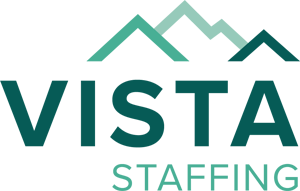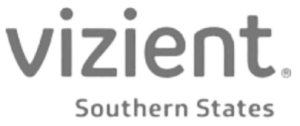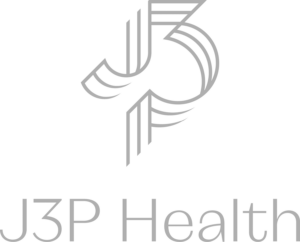The Post-Pandemic Resignation Boom
COVID-19 has challenged and changed the workplace in so many ways and we may never go back to operating how we did before the pandemic uprooted everyone’s lives. Namely, the post-pandemic resignation boom has brought employee retention issues under the spotlight. As turnover rates increase, organizations continue to face high recruiting and onboarding costs. Additionally, not only do job seekers have new expectations compared to pre-pandemic times, but current employees have also developed new expectations when considering whether to stay with an organization. These expectations include working remotely and, most importantly, having an optimum work/life balance. Employees want coherence between their personal and professional lives, and when employees struggle to maintain healthy boundaries between work and home, it’s hard to be fully invested and engaged at work. A healthy work-life balance is essential to employee engagement and ultimately to employee retention.
Corazon has always believed in having an optimal work/life balance for its employees, and with the labor market in such turmoil, it is now more important than ever to consider the needs of current employees and ensure that employee engagement and retention strategies are optimal. In general, the marketplace for talent has had some shifts, but employees are still attracted to organizations that make them feel valued, respected, and safe. In these post-pandemic times, it is now more important than ever to recognize and uphold these employee-driven values. Post-pandemic remote work is here to stay, but engaging remote employees is not easy to master. And as difficult employee engagement is overall, keeping remote employees engaged takes more focused efforts such as staying connected through technology and virtual meetings, encouraging social interaction, providing employees the tools to (remotely) succeed, and ensuring optimal communication. Remote work has the potential to isolate staff, which can have a significant negative impact on team performance, employee retention, and engagement. Using technology to promote inclusivity will be key to combatting any potential feelings of isolation.
But how do organizations keep employees engaged in the midst of a wave of resignations?
 Employees are rejecting outdated, “transactional” relationships with their employers. Instead, they want to have a feeling of being valued by their organization. They want to be engaged! But employee engagement is more than just having happy employees. It is having employees that are committed to the organization’s success and are emotionally invested in the work being done. Engaged employees are motivated to work hard towards a common goal that is in line with the organization’s vision. This makes for an environment that promotes positive attitudes and nourishes a sense of being valued as part of the organization. Fostering a workplace environment where employees feel supported and conduct their responsibilities within a team-focused atmosphere is undeniably beneficial for the entire company. Everyone wants to feel appreciated for what they do.
Employees are rejecting outdated, “transactional” relationships with their employers. Instead, they want to have a feeling of being valued by their organization. They want to be engaged! But employee engagement is more than just having happy employees. It is having employees that are committed to the organization’s success and are emotionally invested in the work being done. Engaged employees are motivated to work hard towards a common goal that is in line with the organization’s vision. This makes for an environment that promotes positive attitudes and nourishes a sense of being valued as part of the organization. Fostering a workplace environment where employees feel supported and conduct their responsibilities within a team-focused atmosphere is undeniably beneficial for the entire company. Everyone wants to feel appreciated for what they do.
Corazon has several highly effective employee retention and engagement strategies that include programs gratifying and involving employees. We realize how important it is for an organization to recognize, reward, and value the contributions made by its employees, yet these contributions must be equitable. It takes organizational strength and confidence to appreciate that outcomes are better when more ideas are included, and diverse perspectives are heard. Another highly effective strategy is to prioritize open communication because after all, communication is the cornerstone of any engaged workforce.
So, to combat the “great resignation” and retain employees, remember that successful employee retention involves strategic actions to keep employees motivated, focused, and engaged. It is crucial that employees elect to remain employed. Lastly, programs must recognize that the key to having a successful retention strategy includes enacting a robust employee engagement program.
Authored by Carol Wesley, RN, MSN/MHA.

 company
company 
 (412) 364-8200
(412) 364-8200












 Employees are rejecting outdated, “transactional” relationships with their employers. Instead, they want to have a feeling of being valued by their organization. They want to be engaged! But employee engagement is more than just having happy employees. It is having employees that are committed to the organization’s success and are emotionally invested in the work being done. Engaged employees are motivated to work hard towards a common goal that is in line with the organization’s vision. This makes for an environment that promotes positive attitudes and nourishes a sense of being valued as part of the organization. Fostering a workplace environment where employees feel supported and conduct their responsibilities within a team-focused atmosphere is undeniably beneficial for the entire company. Everyone wants to feel appreciated for what they do.
Employees are rejecting outdated, “transactional” relationships with their employers. Instead, they want to have a feeling of being valued by their organization. They want to be engaged! But employee engagement is more than just having happy employees. It is having employees that are committed to the organization’s success and are emotionally invested in the work being done. Engaged employees are motivated to work hard towards a common goal that is in line with the organization’s vision. This makes for an environment that promotes positive attitudes and nourishes a sense of being valued as part of the organization. Fostering a workplace environment where employees feel supported and conduct their responsibilities within a team-focused atmosphere is undeniably beneficial for the entire company. Everyone wants to feel appreciated for what they do.















